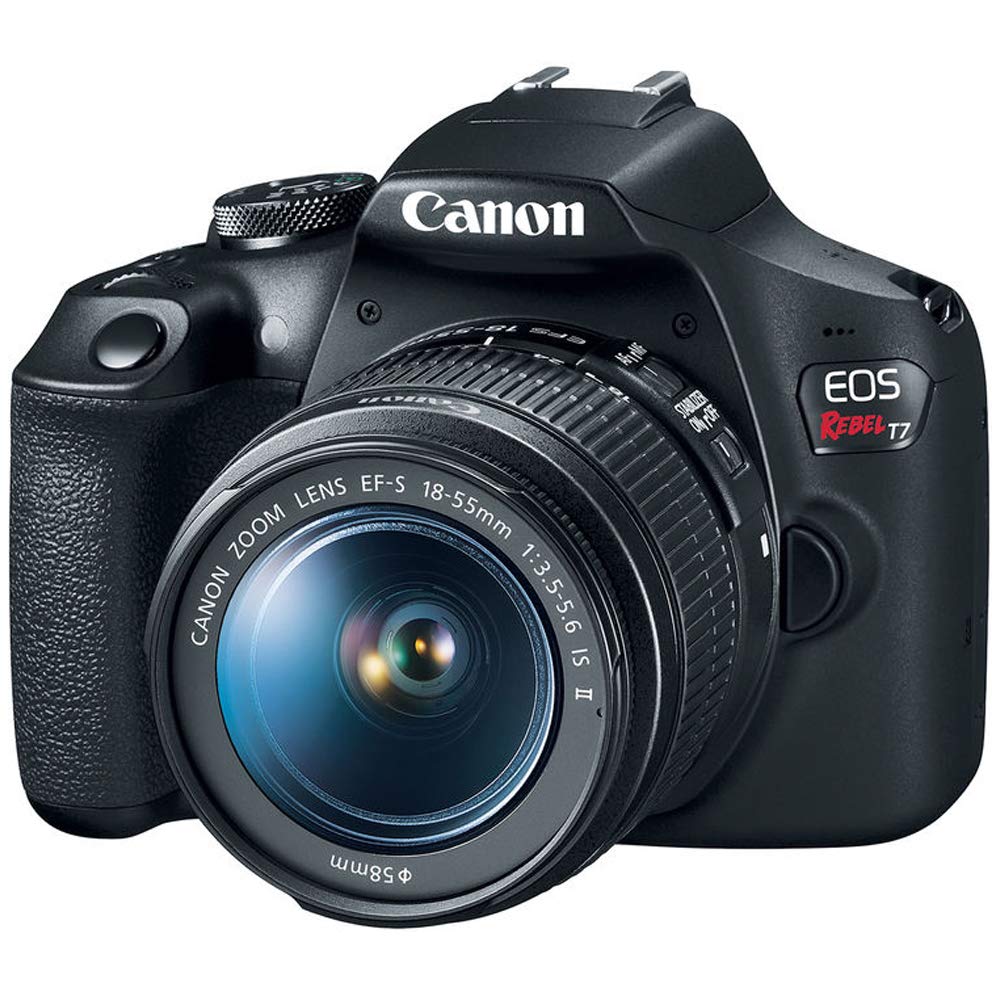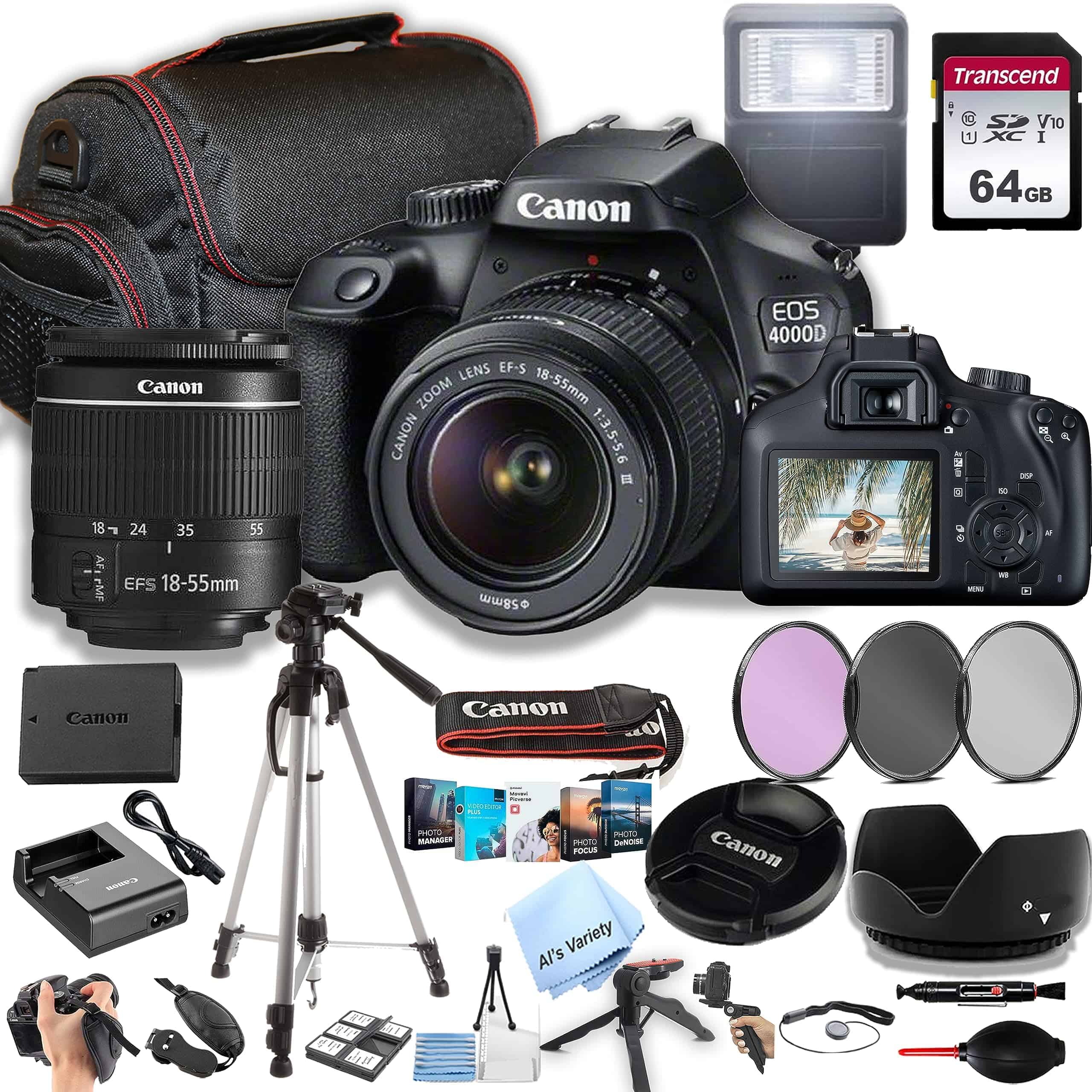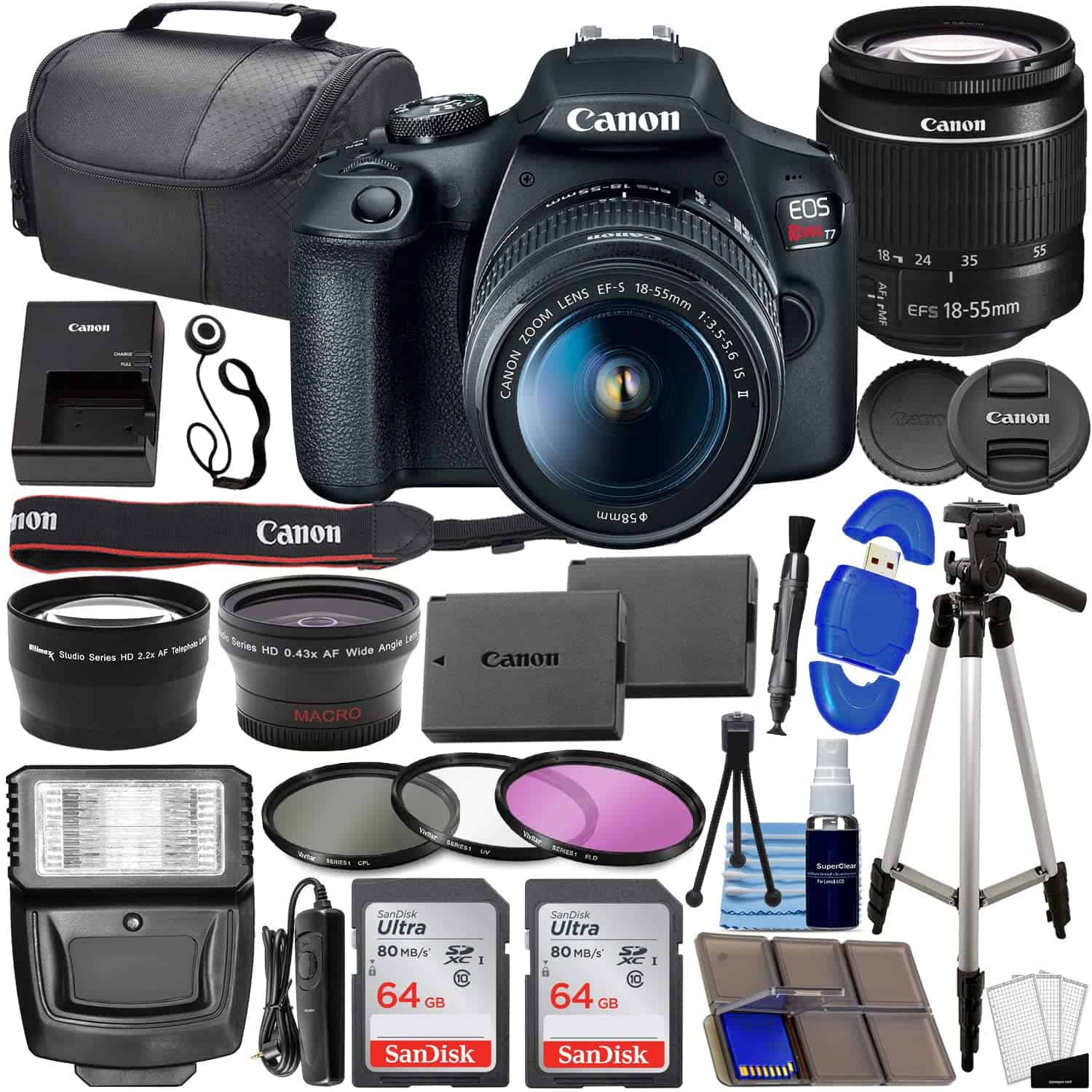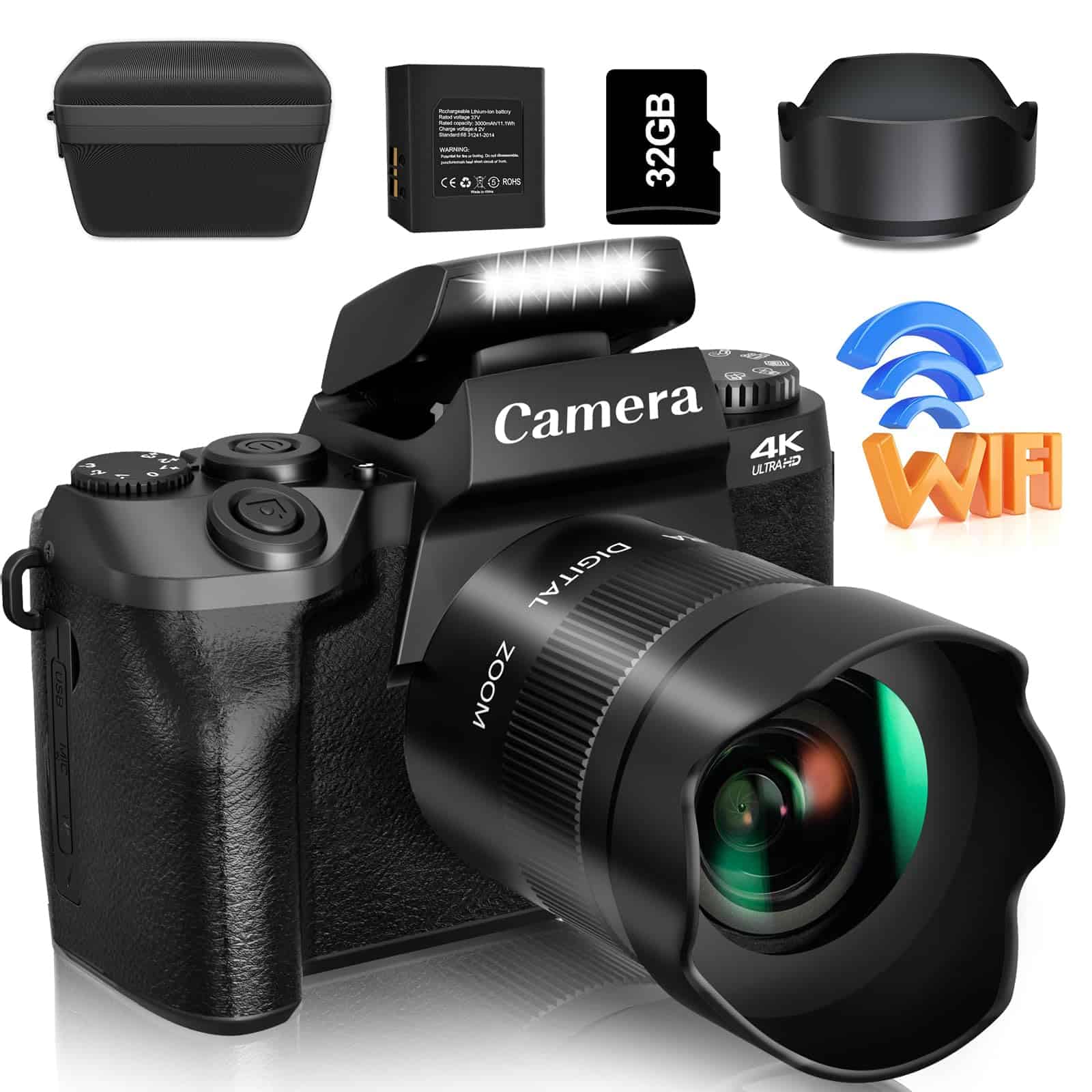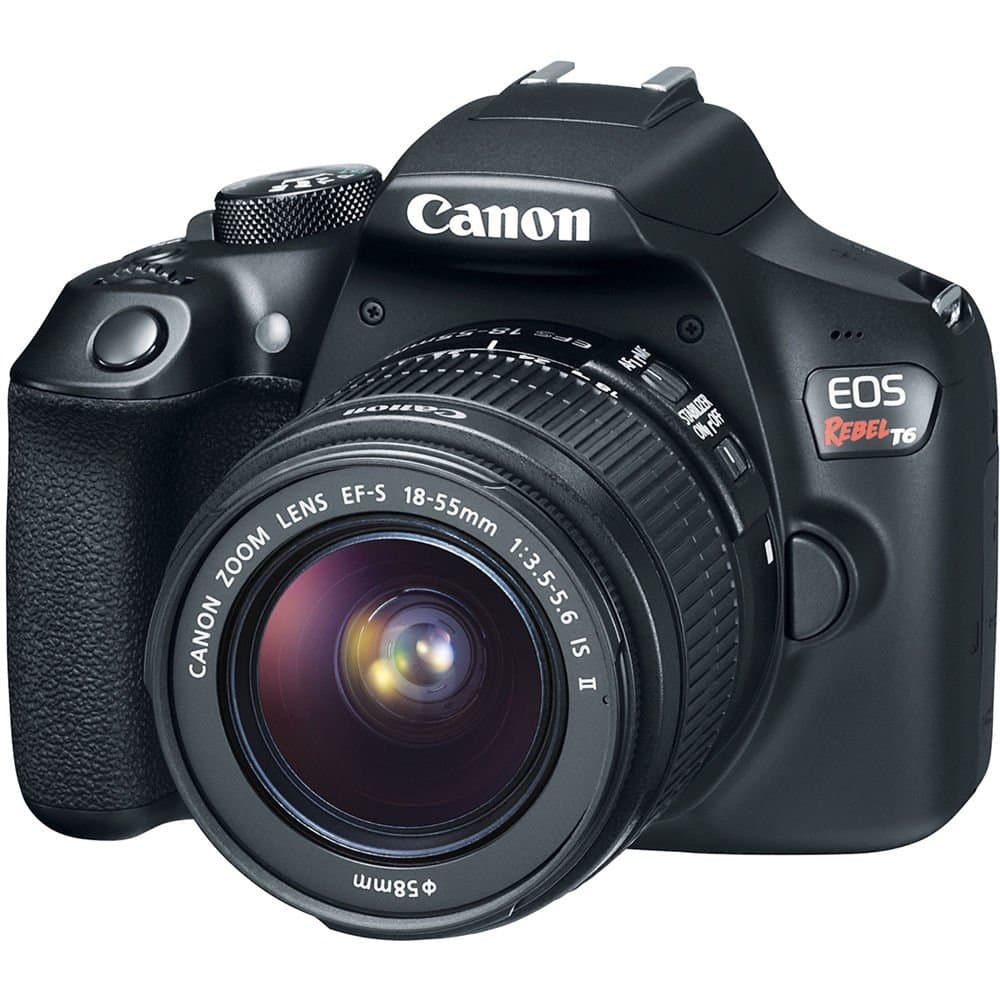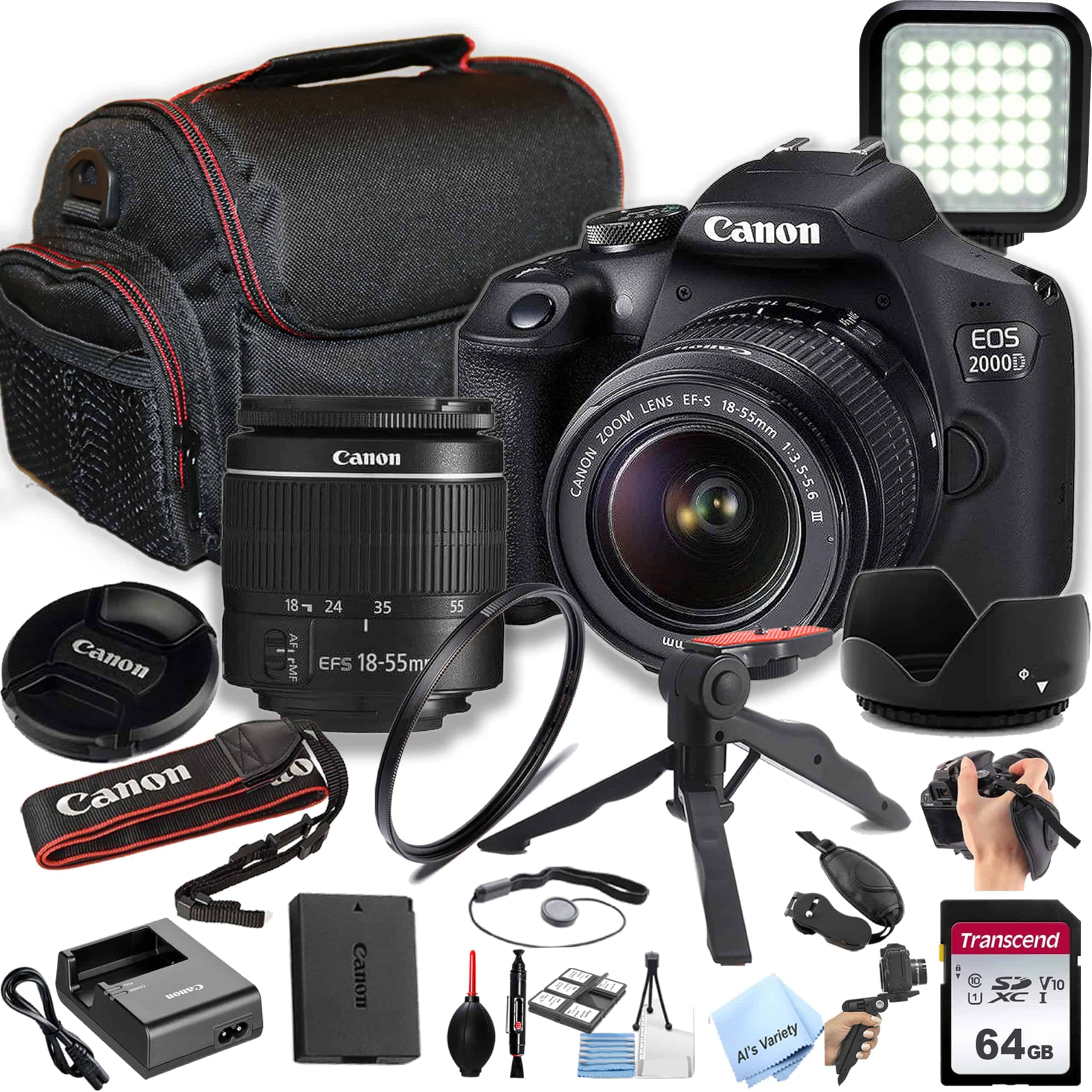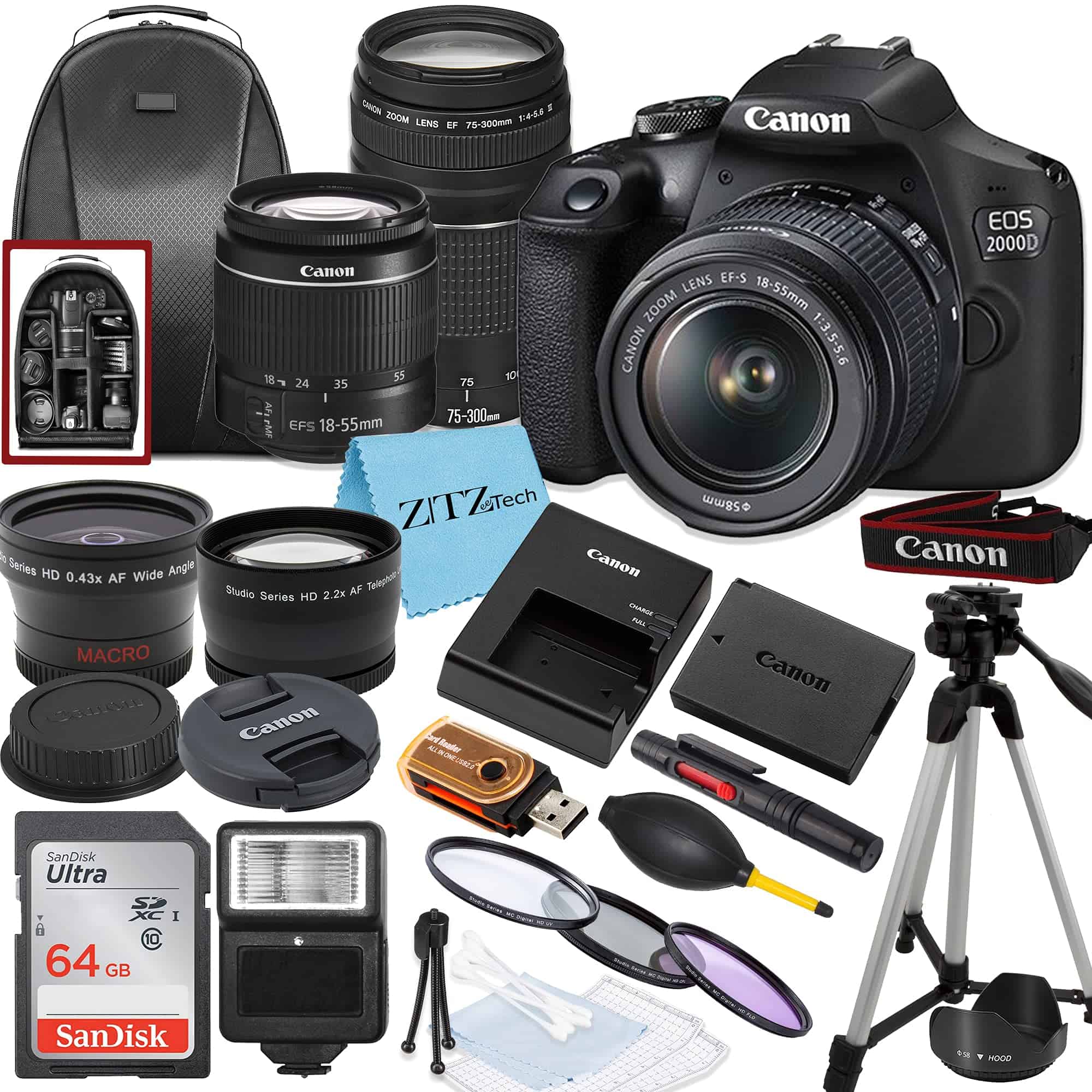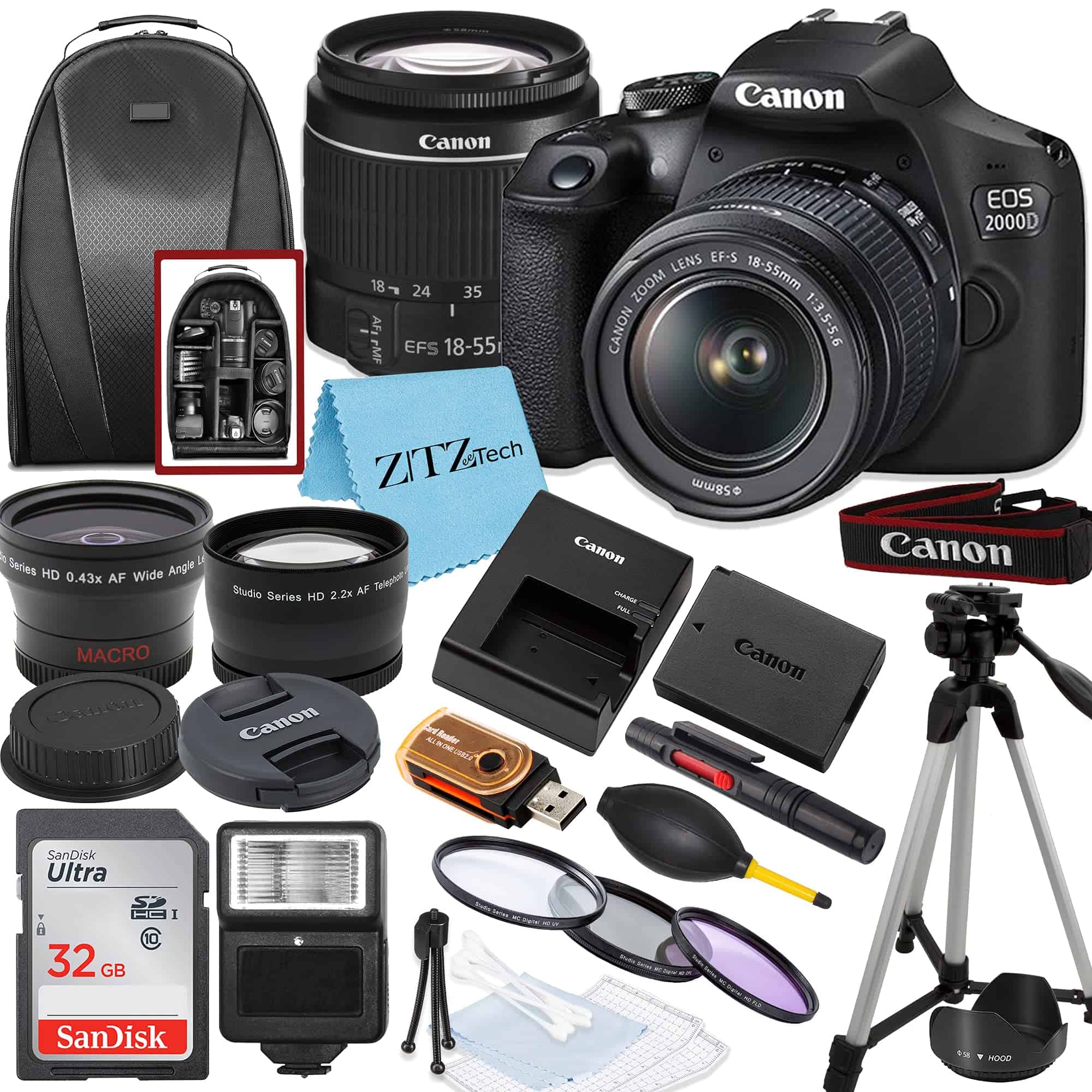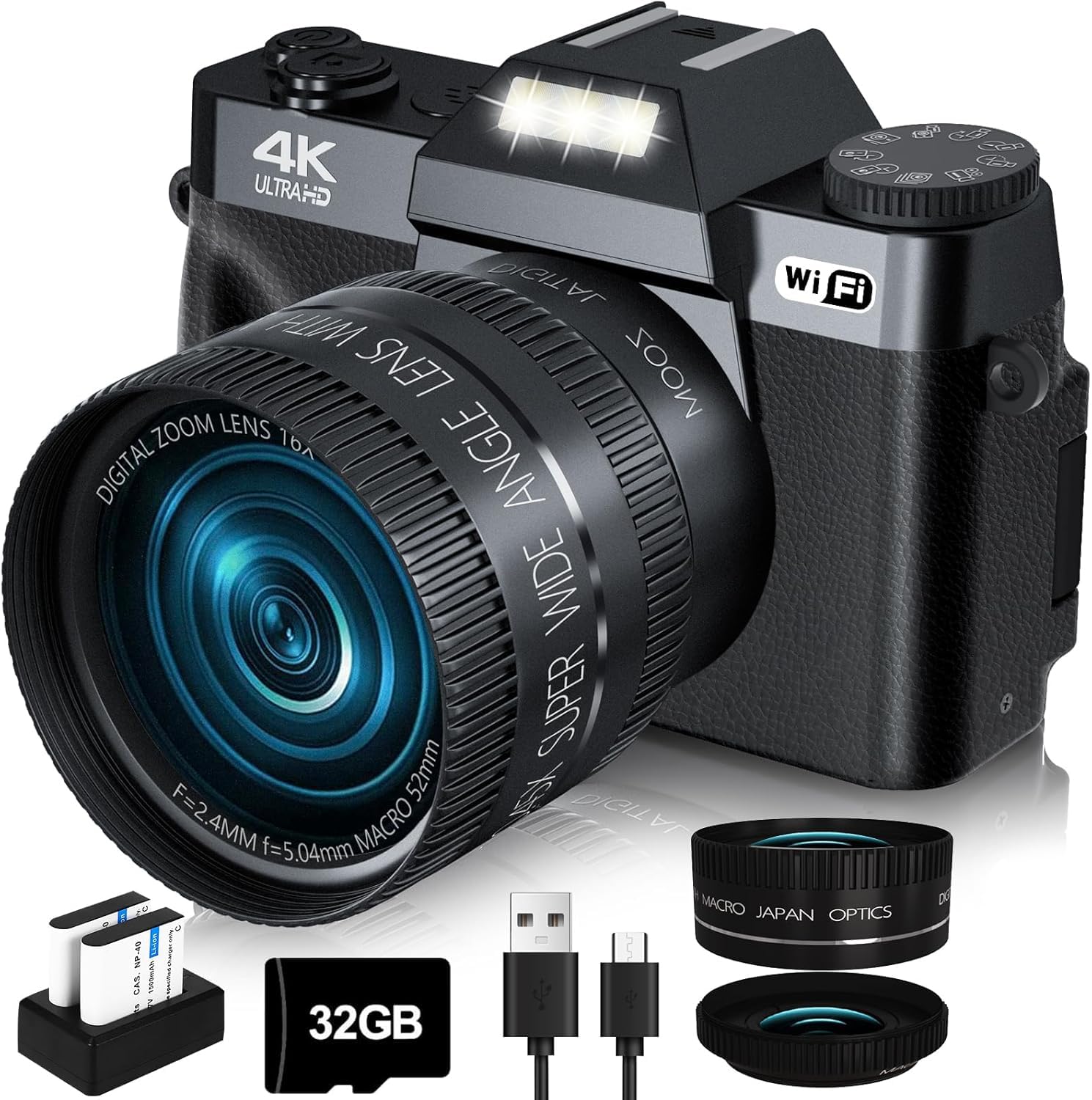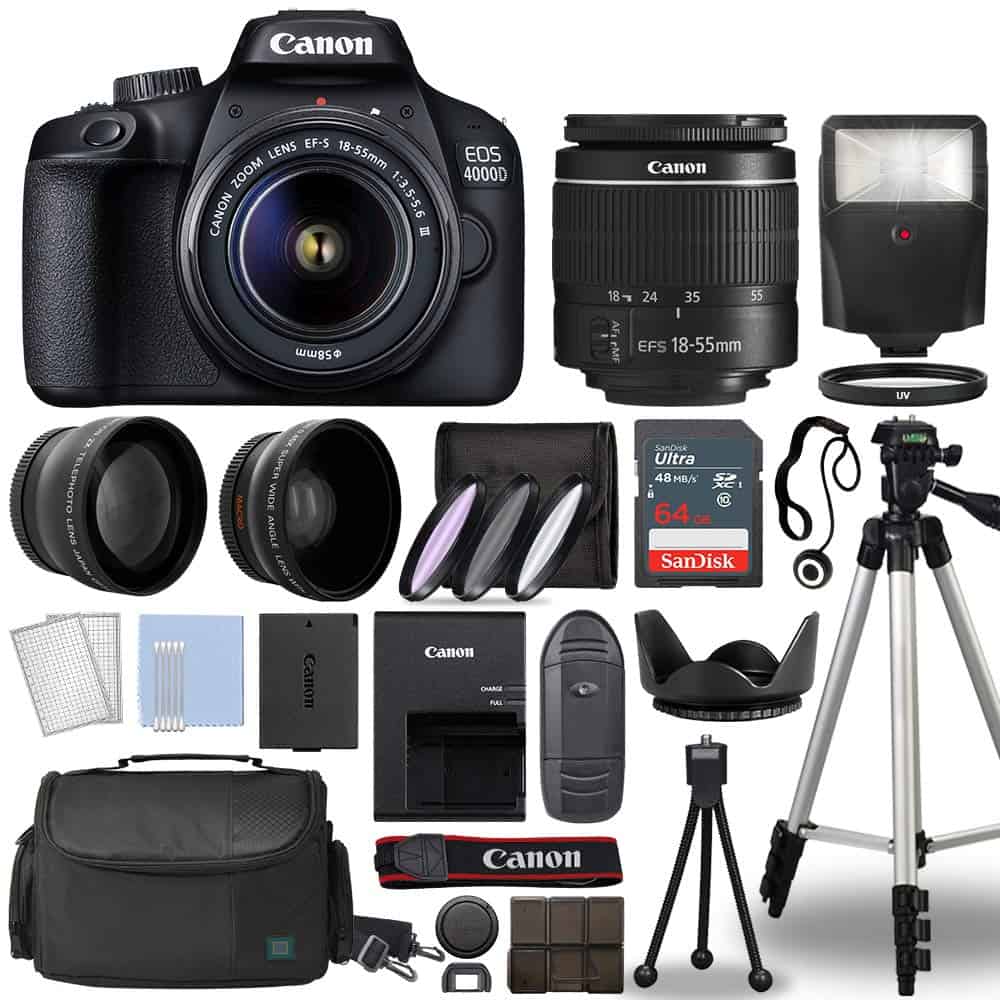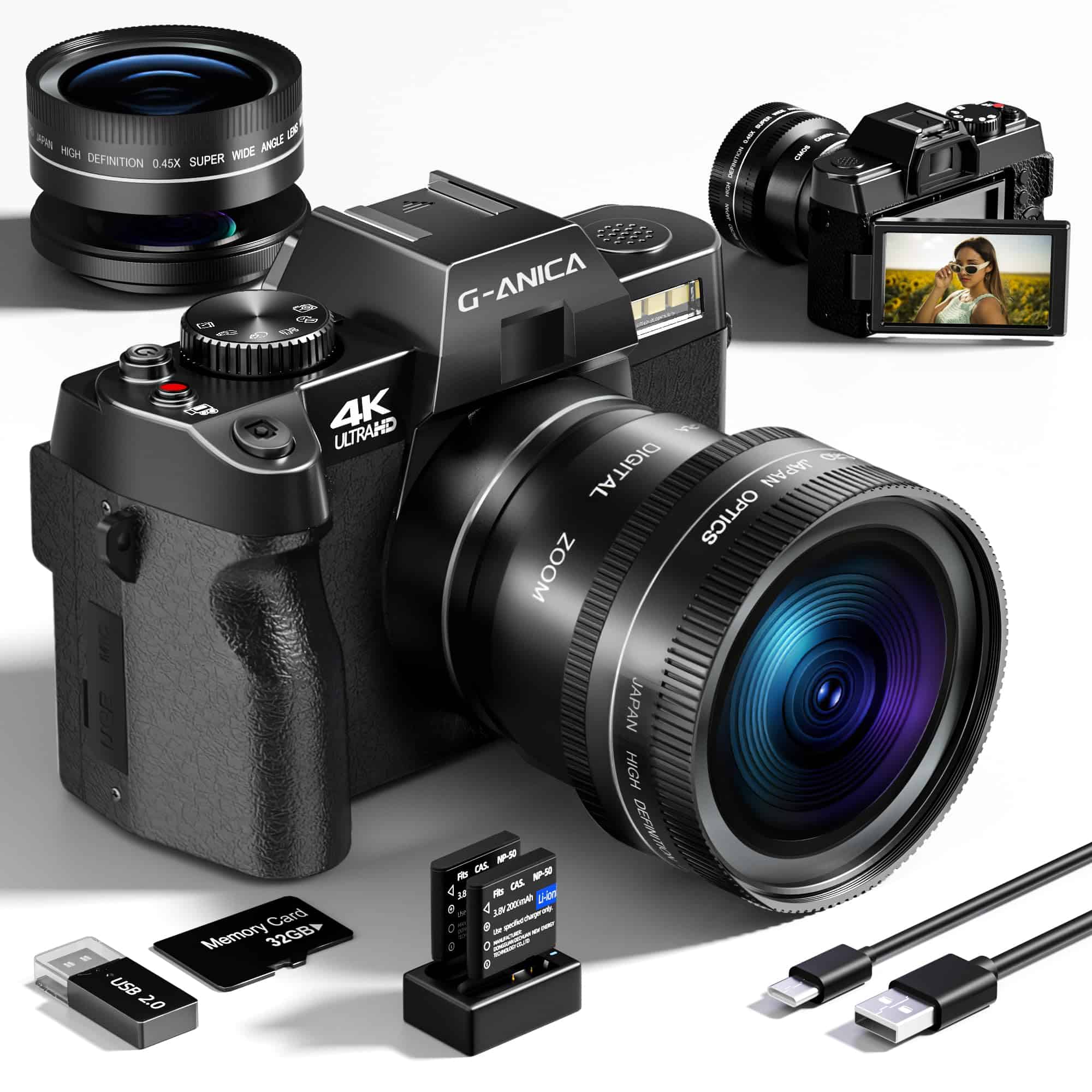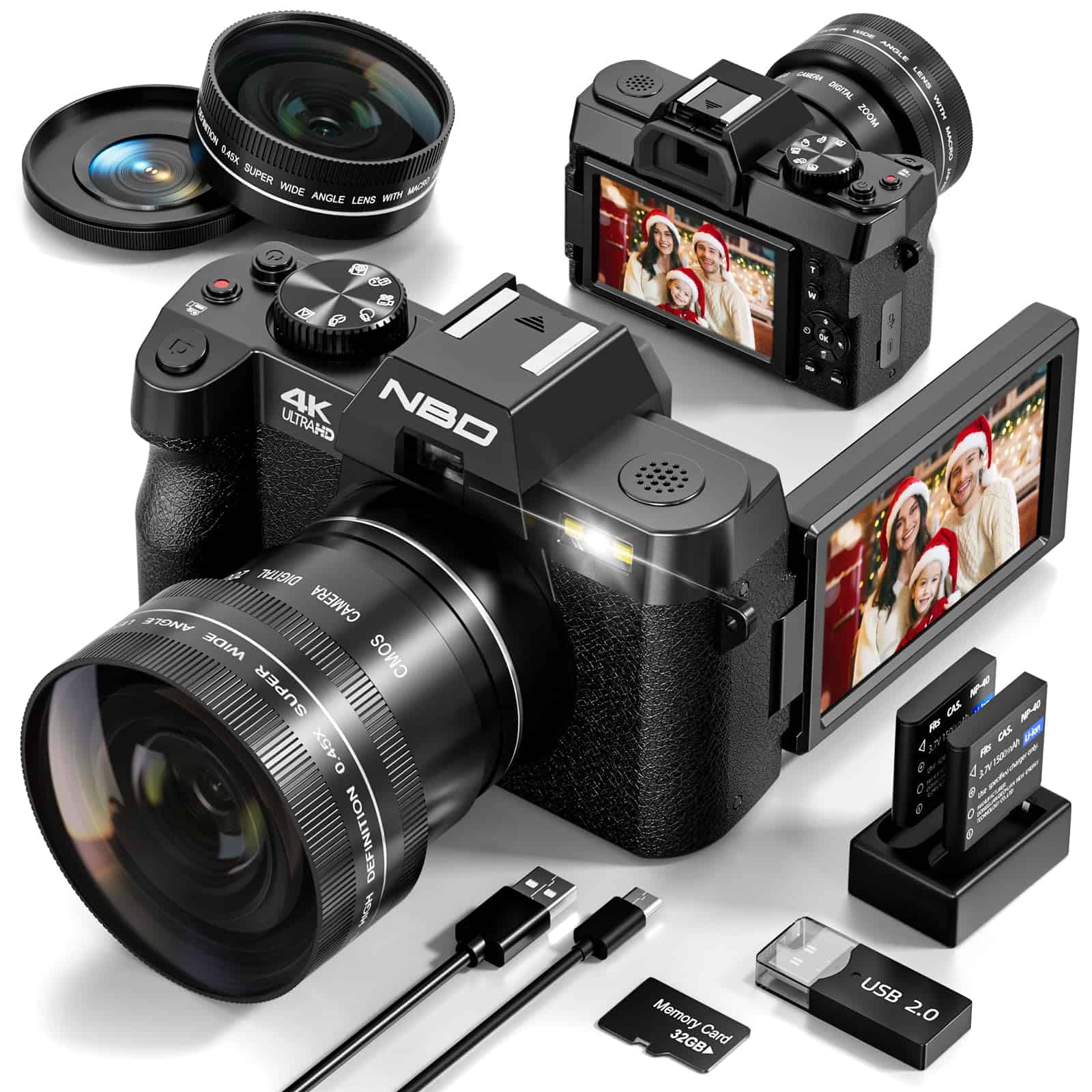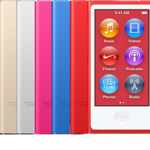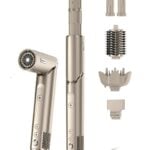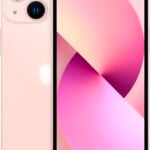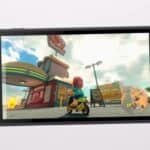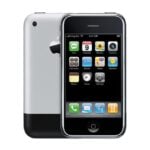Photography is a fun hobby that many people enjoy. DSLR cameras let you take better pictures than a phone. They have bigger sensors and let you change lenses for different types of photos.
For beginners, a good DSLR camera should be easy to use with simple controls. It should also have auto settings to help you learn. Many starter DSLRs cost between $400 and $800, which is a good price for the quality they offer.
When buying your first DSLR, look at three main things: price, ease of use, and future growth. You want a camera that’s not too expensive but still takes great photos. It should have features that will still be useful as your skills improve. We spent weeks testing fifteen entry-level DSLR cameras to find the best options for new photographers.
Best DSLR Cameras for Beginners
We’ve tested dozens of cameras to find the best DSLR options for new photographers. Our top picks offer user-friendly interfaces with enough advanced features to help you grow your skills. These cameras balance quality, affordability, and ease-of-use to start your photography journey on the right foot.
Canon Rebel T7
The Canon Rebel T7 is the perfect entry-level DSLR for beginners who want quality photos without breaking the bank.
Pros
- Excellent 24.1MP sensor captures detailed images even in low light
- Built-in Wi-Fi makes sharing photos quick and easy
- User-friendly controls that grow with your skills
Cons
- Slower continuous shooting (3 fps) than newer models
- Fixed screen with no touch capability
- Autofocus system is basic with only 9 points
We recently tested the Canon Rebel T7, and it’s a solid choice for anyone starting their photography journey. The camera feels sturdy but lightweight in your hands, making it comfortable for all-day shooting sessions. Its 24.1 megapixel sensor captures impressive details in various lighting situations, and we were particularly impressed with how well it performed during sunset shoots.
Setting up the camera took just minutes. The menu system is straightforward, and even without reading the manual, we figured out most functions easily. The included 18-55mm lens is versatile enough for everyday photography, from landscapes to portraits. When we zoomed in to check image quality on our computer, the photos were crisp and showed good color accuracy.
Battery life is another strong point. We took about 400 shots during a weekend trip and still had power to spare. The built-in Wi-Fi worked flawlessly when we needed to transfer images to our phones for quick social media posts. While the 9-point autofocus system isn’t as advanced as pricier models, it tracked moving subjects well enough during our testing at a local soccer game. For the price, this camera offers tremendous value for beginners looking to step up from smartphone photography.
Canon EOS Rebel T100
The Canon EOS Rebel T100 offers excellent value for beginner photographers with its user-friendly design, decent image quality, and comprehensive accessory bundle.
Pros
- Easy to use with helpful auto modes for beginners
- Includes extensive accessories in the bundle
- Good image quality with 18MP sensor
Cons
- Relatively slow continuous shooting (3 fps)
- Small 2.7-inch LCD screen
- Some bundle accessories feel cheap
We tested the Canon EOS Rebel T100 (also known as EOS 4000D) and found it ideal for photography newcomers. The camera feels light in hand but still sturdy enough for daily use. Its simple menu system made it easy to start shooting right away without diving into complicated settings.
The 18MP sensor captures surprisingly good photos for an entry-level DSLR. We noticed sharp details and natural colors in outdoor situations. The kit lens (18-55mm) works well for most everyday shots, from landscapes to portraits. When light gets low, the camera struggles a bit with noise, but that’s expected at this price point.
This bundle adds tremendous value with extras like a 64GB memory card, camera bag, and tripod. We particularly liked the included filters and flash, which let us experiment with different photography styles. Some accessories aren’t the highest quality, but they’re perfect for learning the basics before upgrading. The Wi-Fi connectivity made sharing photos to our phones simple and quick. For beginners looking to step up from smartphone photography, this affordable DSLR package delivers everything needed to start the journey.
Canon EOS Rebel T7 DSLR Camera Bundle
The Canon EOS Rebel T7 is an ideal starter DSLR with excellent image quality and a complete accessory bundle that gives beginners everything they need right out of the box.
Pros
- Easy to use with intuitive controls
- Great image quality in various lighting conditions
- Comes with multiple lenses and accessories
Cons
- Slower continuous shooting speed (3 fps)
- Basic autofocus system with 9 points
- Heavier than mirrorless alternatives
We recently tested the Canon EOS Rebel T7 bundle and found it perfect for photography newcomers. The camera feels solid in your hands with a comfortable grip that makes shooting all day easy. Its 24.1MP sensor captures sharp images with vibrant colors that look great even when enlarged.
Setting up the camera took just minutes. The menu system is straightforward, making it easy to switch between auto and manual modes as your skills grow. We especially liked the included 18-55mm lens for everyday shooting. The wide-angle and telephoto attachment lenses included in the bundle let us experiment with different styles without buying separate lenses.
Battery life impressed us during testing, lasting through a full day of shooting. The included memory cards (two 64GB SD cards) store thousands of photos, so you won’t run out of space quickly. While the 3 fps continuous shooting isn’t the fastest, it’s enough for most beginners. We found the Wi-Fi connectivity useful for sharing photos directly to our phones. For the price, this bundle offers amazing value with everything a new photographer needs to start their journey.
Saneen Digital Camera 4K
This beginner-friendly camera offers impressive features at an affordable price point, making it a solid choice for teens or new photographers who want to move beyond smartphone photography.
Pros
- 64MP photos and 4K video capability in a compact design
- User-friendly touchscreen interface with front and rear cameras
- Complete starter kit includes memory card, battery, and accessories
Cons
- Image quality falls short of professional-grade cameras
- Limited compatibility with external microphones
- Battery life only lasts about an hour of continuous use
We recently tested the Saneen Digital Camera and found it surprisingly capable for its price range. The 4-inch touchscreen makes navigation simple, and switching between the front and rear cameras takes just a tap. This feature is especially handy for vloggers who want to see themselves while recording.
The camera comes ready to use right out of the box. We appreciated the included 32GB memory card, lens hood, and carrying case – extras that would typically cost more if purchased separately. The WiFi function worked well for transferring photos to our phones, though the connection sometimes took a few tries to establish.
Photo quality is decent in good lighting conditions. The 64MP sensor captures more detail than most smartphone cameras, though you’ll notice some noise in low-light situations. We were impressed with the 4K video recording, which produced smooth footage for casual use. The digital zoom does reduce quality noticeably, so we recommend staying at lower zoom levels for better results. While not comparable to higher-end DSLRs, this Saneen camera offers beginners a solid starting point to learn photography basics.
Canon EOS Rebel T100 Bundle
The Canon EOS Rebel T100 offers exceptional value for beginners with its user-friendly features, decent image quality, and complete accessory bundle that helps new photographers start shooting right away.
Pros
- Easy to use with helpful auto modes
- Complete starter bundle with memory card and filters
- Good image quality for the price point
Cons
- Small 2.7-inch LCD screen
- Some bundle accessories feel cheaply made
- Limited to 3 fps continuous shooting
We recently tested this Canon Rebel T100 bundle and found it perfect for photography beginners. The camera feels solid yet lightweight in hand, and the controls are laid out logically. At just 15.4 ounces, we carried it all day without shoulder strain.
Setting up was quick, and the Scene Intelligent Auto mode helped us capture nice shots right away. The 18MP sensor produces clean images with good detail and color. We took photos at a local park and were impressed with how the 18-55mm kit lens handled both landscapes and close-ups of flowers.
The Wi-Fi connectivity worked well for transferring images to our phones. Battery life lasted through a full day of shooting. While the 3 fps shooting speed isn’t ideal for fast action, it’s enough for most beginner needs. Some bundle accessories like the mini tripods aren’t the best quality, but the memory card, filters, and lens hood add real value. For new photographers wanting to learn DSLR basics without breaking the bank, this bundle offers everything needed to start shooting.
Canon Rebel T6
The Canon Rebel T6 is an excellent entry-level DSLR that combines user-friendly features with impressive image quality, making it perfect for photography beginners.
Pros
- Easy to use with intuitive controls
- Excellent image quality for the price
- Built-in WiFi for quick photo sharing
Cons
- Limited continuous shooting speed
- Fixed screen (not touch or flip)
- Somewhat outdated processor
We recently tested the Canon Rebel T6, and it proved to be a reliable starter camera. The 18MP sensor captures sharp images with good color accuracy. In bright conditions, photos look crisp and detailed, while the camera handles low light reasonably well for its class.
The kit lens (18-55mm) offers enough versatility for most beginners. We found it great for landscapes and portraits alike. The autofocus system, while not lightning-fast, works well for still subjects and casual shooting. Battery life lasted through a full day of shooting without needing a charge.
WiFi connectivity is a standout feature that worked smoothly in our tests. We transferred photos to our phones in seconds, which is perfect for sharing on social media. The menu system is straightforward – we navigated it easily without constant reference to the manual. For anyone stepping up from smartphone photography, the Rebel T6 offers a perfect balance of quality and simplicity.
Canon Rebel T7 DSLR Bundle
The Canon Rebel T7 is the perfect entry-level DSLR for beginners thanks to its user-friendly interface, excellent image quality, and comprehensive accessory bundle that offers amazing value.
Pros
- Easy to learn with helpful on-screen guidance
- Excellent 24.1MP sensor captures detailed images even in low light
- Complete bundle with memory card, tripod, and filters
Cons
- Limited 3 fps continuous shooting speed
- Basic 9-point autofocus system
- LCD screen doesn’t tilt or flip
We recently tested the Canon EOS 2000D (also known as the Rebel T7) and found it truly shines as a beginner’s camera. The 24.1MP APS-C sensor delivers impressively detailed photos with rich colors. Even when shooting in dim lighting, we captured clear images thanks to the ISO range that extends up to 6400.
The camera feels solid in hand despite its lightweight design. Canon’s menu system is incredibly intuitive – perfect for newcomers to photography. We especially liked the Creative Auto mode, which lets users adjust settings with simple sliders instead of technical terms. The built-in Wi-Fi made sharing photos to our phones quick and painless.
This bundle adds tremendous value with essential accessories. The included 64GB memory card stores thousands of photos, while the tripod helped us capture sharp night shots. We found the UV filter protected the lens during outdoor shoots, and the camera bag kept everything organized. For beginners wanting to grow their skills without being overwhelmed, this Rebel T7 bundle provides everything needed to start shooting great photos right away.
Canon Rebel T100 DSLR Camera Bundle
We believe the Canon Rebel T100 is the perfect entry-level DSLR for beginners who want quality photos without breaking the bank.
Pros
- Complete kit with everything needed to start shooting right away
- Simple controls make learning photography basics easy
- Excellent image quality for the price point
Cons
- Screen is fixed and smaller than newer models
- Only 3 frames per second shooting speed
- Some bundled accessories feel cheaply made
After testing the Canon Rebel T100 for several weeks, we found it strikes a great balance between quality and affordability. The 18MP sensor captures sharp images with nice colors straight out of the camera. Even in low light, the pictures turn out better than what most smartphones can produce.
The camera body feels solid in our hands despite its lightweight design. Button placement is thoughtful, and the menu system is easier to navigate than many other cameras we’ve tried. We especially liked how quickly we could switch between auto mode for quick snapshots and manual mode when we wanted more control.
The bundle extras are a mixed bag. The included 128GB memory card and extra lenses add real value, giving new photographers room to experiment with different shooting styles. However, the tripod felt wobbly when we set up the camera on it, and we’d recommend upgrading that piece eventually. Battery life impressed us during our testing – we captured over 500 photos on a single charge while spending a full day shooting outdoors.
Canon EOS Rebel T100 Beginner DSLR
This refurbished Canon DSLR offers excellent value for beginners with its user-friendly features, decent image quality, and complete accessory bundle.
Pros
- Complete starter bundle with memory card and cleaning kit
- Simple controls perfect for learning photography
- Built-in Wi-Fi for easy photo sharing
Cons
- Somewhat dated image processor
- Small 2.7-inch display screen
- Limited continuous shooting speed (3 fps)
We recently tested this renewed Canon EOS 4000D (also known as the Rebel T100), and it’s a solid choice for photography newcomers. The camera feels sturdy in hand despite its budget-friendly price point. Its 18-megapixel sensor captures sharp images with good color accuracy, especially in well-lit settings.
The included 18-55mm lens works well for everyday shots. We found it handles landscapes, portraits, and close-ups with decent quality. The Scene Intelligent Auto mode is particularly helpful for beginners – just point and shoot while the camera does the work. When you’re ready to grow, the Creative Auto mode lets you add artistic filters and adjust settings without deep technical knowledge.
Wi-Fi connectivity is a nice bonus that many entry-level cameras lack. We easily transferred photos to our phones using Canon’s app. The optical viewfinder provides a true DSLR experience, though the LCD screen is smaller than newer models. Battery life is good for a full day of shooting. While not packed with the latest features, this renewed Canon bundle offers everything a beginning photographer needs to learn and grow.
Canon Rebel T7 DSLR Bundle
This refurbished Canon Rebel T7 bundle offers amazing value for beginners with its excellent image quality, comprehensive accessory kit, and dual lens versatility.
Pros
- Complete starter package with everything needed to begin photography
- User-friendly controls perfect for learning photography basics
- Excellent image quality with 24.1MP sensor and DIGIC 4+ processor
Cons
- Slower autofocus system compared to newer models
- Limited continuous shooting at only 3 fps
- Battery life could be better for extended shooting sessions
We recently tried this refurbished Canon Rebel T7 bundle and found it ideal for photography beginners. The camera feels solid in hand with intuitive controls that don’t overwhelm new users. Setting up the camera took just minutes, and we were shooting in no time thanks to the helpful Auto modes.
The dual lens setup gives remarkable versatility right out of the box. The 18-55mm lens works great for everyday shots, while the 75-300mm telephoto lets you capture distant subjects with surprising clarity. We shot some wildlife photos from a good distance, and the results were impressive for an entry-level system.
The included accessories make this bundle an even better deal. The 64GB memory card held thousands of photos, and the tripod proved essential for night photography experiments. Wi-Fi connectivity made sharing photos to our phones quick and simple. For anyone looking to start their photography journey without breaking the bank, this refurbished bundle delivers exceptional value with reliable Canon quality.
Canon Rebel T7 DSLR Camera Bundle
The Canon Rebel T7 is an excellent entry-level DSLR that offers impressive image quality and easy-to-use features at a price that won’t break the bank for photography beginners.
Pros
- Sharp 24.1MP photos with true-to-life colors
- User-friendly controls perfect for learning photography
- Built-in Wi-Fi makes sharing photos quick and simple
Cons
- Slower continuous shooting at only 3 fps
- Limited low-light performance compared to newer models
- Battery life could be better for all-day shooting
When we first picked up this Canon Rebel T7 bundle, we were impressed by how comfortable it felt in our hands. The camera has a solid weight without feeling too heavy, making it perfect for beginners who want to practice for hours without arm fatigue.
Taking photos with the T7 is a breeze. The optical viewfinder gives a clear view of your subject, and the 3-inch LCD screen makes it easy to review your shots. We found the 18-55mm kit lens versatile enough for most everyday photography situations – from family portraits to landscape shots.
The image quality surprised us for an entry-level camera. Colors look natural, and the 24.1MP sensor captures plenty of detail for printing or cropping. Wi-Fi connectivity works smoothly too. We connected to our phones in seconds and transferred photos to share on social media right away.
This bundle includes helpful extras like a tripod, extra lenses, and a 32GB memory card. The wide-angle lens attachment came in handy when we wanted to capture more of the scenery during our test shoots. For new photographers, having everything in one package saves the headache of figuring out what accessories to buy.
Overall, the Canon Rebel T7 hits the sweet spot between quality and affordability. While not the newest model on the market, it provides all the essentials a beginner needs to start their photography journey with confidence.
VJIANGER 4K Digital Camera
The VJIANGER 4K camera delivers impressive features for beginners at an affordable price point, making it a solid first DSLR-style camera for those starting their photography journey.
Pros
- Lightweight and compact design perfect for travel
- Easy WiFi connectivity for quick photo sharing
- Comes with everything needed to start shooting
Cons
- Manual focus only (no autofocus)
- Limited in low light situations
- Not a true DSLR despite similar styling
We tested this camera recently and were pleasantly surprised by its performance as a starter camera. At just over half a pound, it’s light enough to carry all day. The 3-inch flip screen makes it easy to frame self-portraits or vlogging content, which is helpful for beginners learning composition.
Setting up the WiFi connection took just minutes. We transferred photos directly to our phones and shared them online almost instantly. This feature alone makes the camera much more useful than many entry-level models we’ve tried before.
The included 52mm wide angle and macro lenses add versatility without needing to buy extras right away. We captured some impressive landscape shots with the wide angle attachment. The 32GB memory card that comes with it holds plenty of photos and videos to get started.
Manual focusing takes some practice, but we found it works well once you get the hang of it. The image quality is good in bright conditions, though it struggles a bit in dim lighting. For new photographers learning the basics, this offers a nice middle ground between a phone camera and a true DSLR.
Canon EOS Rebel T100 Kit
This renewed Canon DSLR kit is an excellent choice for beginners who want to start photography without breaking the bank.
Pros
- Complete starter kit with essential accessories
- Easy to use with both auto and manual modes
- Built-in Wi-Fi for quick photo sharing
Cons
- Small 2.7″ LCD screen
- Limited 9-point autofocus system
- Slower shooting speed of 3 fps
We recently got our hands on this Canon EOS Rebel T100 kit and were impressed by its value. The camera comes with everything a new photographer needs to get started – the standard 18-55mm lens, a carrying case, memory card, and even additional wide-angle and telephoto attachments. Setting it up was simple, and we were taking photos within minutes of unboxing.
The image quality is solid for a starter DSLR. With its 18MP sensor, the photos look sharp and clear in good lighting conditions. We took it out for a weekend shoot and captured beautiful landscape shots with nice color reproduction. The camera feels lighter than most DSLRs but still has that sturdy Canon build quality we’ve come to expect.
For beginners, the Scene Intelligent Auto mode works great – just point and shoot. As your skills grow, you can try the creative modes or full manual settings. The battery lasted through a full day of shooting, which was a nice surprise. While it’s not loaded with the newest features found in pricier models, this kit gives new photographers everything they need to learn the basics and grow their skills without feeling overwhelmed.
KODAK PIXPRO AZ405 Digital Camera
The KODAK PIXPRO AZ405 offers impressive zoom capabilities and user-friendly features at an affordable price, making it an excellent starter DSLR-like camera for photography beginners.
Pros
- Powerful 40X optical zoom captures distant subjects clearly
- Simple controls make it easy for beginners to use
- Uses standard AA batteries instead of proprietary ones
Cons
- Focus can be inconsistent, especially in low light
- LCD screen is difficult to see in bright sunlight
- Battery life is somewhat limited with regular AAs
We recently tested the KODAK PIXPRO AZ405 and were impressed with its capabilities as a beginner’s camera. The 40X optical zoom is truly remarkable for a camera in this price range. We could zoom in on subjects far away with surprising clarity, which makes this perfect for nature photography or sporting events where you can’t get close to the action.
The camera feels solid in hand without being too heavy. Its controls are intuitive enough that new photographers won’t feel overwhelmed. The 20-megapixel sensor captures good detail in well-lit conditions, and the optical image stabilization helps reduce blur when shooting at full zoom. We found the 1080p video recording feature worked well for basic vlogging or capturing family moments.
Setting up the camera took just minutes, and we appreciate that it uses standard AA batteries instead of proprietary rechargeables. This means you can easily find replacements anywhere. The 3-inch LCD screen provides decent visibility indoors, though it struggles in bright sunlight. While not a true DSLR, this bridge camera gives beginners a chance to learn photography basics before investing in more expensive equipment.
G-Anica Digital Camera
The G-Anica 48MP Digital Camera offers impressive features at an affordable price, making it an excellent choice for photography beginners.
Pros
- Comes with complete accessory package (32GB card, two batteries, macro and wide lenses)
- User-friendly interface with both auto and manual focus options
- Versatile 180° rotating screen for easy selfies and vlogging
Cons
- Build quality feels somewhat lightweight
- Digital zoom instead of optical zoom reduces image quality
- Some users report occasional freezing issues
We recently tested this camera and found it surprisingly capable for its price point. The 48MP resolution captures detailed images, while the 4K video recording produces clean footage. The rotating screen makes it easy to frame shots from different angles, which is perfect for beginners experimenting with composition.
Setting up the camera took just minutes. The menus are simple to navigate, and the auto focus works well in good lighting. We especially liked the included macro and wide-angle lenses, which let us take close-up shots of small objects and wider landscape photos without buying extra equipment.
Battery life exceeded our expectations. With two included batteries, we shot for several hours without needing to recharge. The WiFi connectivity lets you transfer photos directly to your phone, though we found the companion app has a slight learning curve. For beginners looking to move beyond smartphone photography without breaking the bank, this G-Anica camera provides excellent value with its complete package of accessories.
NBDDIGITAL 48MP Camera
We believe this camera is a solid choice for beginners looking to step up from smartphone photography without breaking the bank.
Pros
- Easy to use with simple controls perfect for newcomers
- Comes with a complete accessory bundle including extra battery and 32GB card
- Versatile with its 180° flip screen and included wide-angle lens
Cons
- Limited low-light performance compared to true DSLRs
- Digital zoom rather than optical zoom affects image quality
- Build quality feels less premium than higher-end cameras
The NBDDIGITAL camera surprised us with its user-friendly design. When we first took it out of the box, we were impressed by how much was included – from the wide-angle and macro lens attachments to the spare battery and charging stand. The 3-inch flip screen made framing selfies and vlog-style videos super simple.
Taking photos with this camera feels smooth thanks to its autofocus system. We found that gently pressing the shutter button helps the camera lock focus quickly. The 48MP resolution captured good detail in daylight shots. For beginners who want to experiment with different shooting styles, the time-lapse and slow-motion features are fun to play with.
Video quality at 4K resolution is decent for the price point. The built-in fill light came in handy when shooting in dimmer settings. We also liked how easy it was to connect to Wi-Fi and transfer photos to our phones. While serious photographers might outgrow this camera quickly, it serves as a perfect starting point for anyone wanting to learn photography basics without investing in expensive gear right away.
Buying Guide
Finding the right DSLR camera as a beginner can feel overwhelming. We’ve created this guide to help you understand what matters most when making your choice.
Budget Considerations
Your budget will shape your options. Entry-level DSLRs typically cost between $400-$800. Higher price doesn’t always mean better for beginners.
Remember to save some money for extras like:
- Memory cards
- Extra batteries
- A camera bag
- Basic cleaning kit
Key Features to Consider
Sensor Size: Most beginner DSLRs have either APS-C or full-frame sensors. APS-C sensors are smaller but more affordable and perfect for learning.
Megapixels: For beginners, 18-24 megapixels is plenty. More megapixels don’t automatically mean better photos.
Autofocus Points: More focus points help track moving subjects. Look for at least 9 focus points, though many newer models offer 20+.
Ease of Use
Menu System: Try cameras in person if possible. The menu should feel logical and easy to navigate.
Weight: Heavier isn’t always better. A camera you’ll actually carry is worth more than one that stays home because it’s too bulky.
Lens Compatibility
Check what lenses work with the camera. A good starter kit lens is fine, but you’ll want options to grow.
| Feature | Why It Matters |
|---|---|
| Image Stabilization | Reduces blur in photos |
| Battery Life | Longer means more shooting time |
| Video Capability | Important if you want to film |
| Connectivity | Wi-Fi makes sharing easier |
We suggest handling several cameras before deciding. What feels comfortable in your hands is just as important as technical specs.
Frequently Asked Questions
Many photographers wonder about the best cameras and gear when starting out. We’ve gathered the most common questions to help you pick the right DSLR for your needs.
What entry-level DSLR camera provides the best value for a beginner?
The Canon EOS Rebel T7 (EOS 2000D) offers excellent value for beginners. It comes with a 24.1MP sensor, simple controls, and costs around $400-500 with a kit lens.
Nikon D3500 is another top value choice. It features a 24.2MP sensor, impressive battery life (1,550 shots per charge), and a helpful Guide Mode that teaches photography basics as you shoot.
If you can spend a bit more, the Canon EOS Rebel SL3 (EOS 250D) provides 4K video and a fully articulating screen while remaining budget-friendly.
Which features should a beginner look for when choosing their first DSLR camera?
User-friendly controls are essential for beginners. Look for cameras with dedicated guide modes or simplified menus to help you learn.
Good image quality in auto mode matters since you’ll use this setting often when starting out. Most entry-level DSLRs now offer at least 24MP, which is plenty for beginners.
Battery life is important – choose cameras offering 500+ shots per charge. Also consider size and weight – you’ll take more photos with a camera that’s comfortable to carry.
A flip or tilt screen helps with creative angles, and built-in Wi-Fi makes sharing photos easier.
Is it more advisable for a beginner to start with a DSLR or a mirrorless camera?
DSLRs typically offer better battery life, with entry models capturing 600-1,500 shots per charge versus 300-400 for mirrorless cameras.
Mirrorless cameras are smaller and lighter, making them easier to carry all day. They also show exposure changes in real-time through the viewfinder, which helps beginners learn faster.
DSLRs often cost less for similar image quality. You can find good DSLR starter kits for $100-200 less than comparable mirrorless options.
We recommend trying both types in a store. The right choice depends on your priorities: battery life and lower cost (DSLR) versus size and learning tools (mirrorless).
What are the differences between entry-level DSLR cameras from Canon and Nikon?
Canon cameras typically offer more intuitive menus and touch interfaces. Their Dual Pixel autofocus system also performs better for video and live view shooting.
Nikon DSLRs often provide slightly better image quality and dynamic range at the same price point. Their entry-level models like the D3500 also tend to have superior battery life.
Canon has more lens options at lower prices, which matters as you expand your collection. Nikon lenses generally cost more but maintain their value better over time.
Both brands make excellent cameras, so you can’t really go wrong with either choice.
How important is the camera body versus the lens quality for a beginner’s DSLR?
Lenses impact image quality more than camera bodies do. A basic camera with a great lens will take better photos than an expensive camera with a poor lens.
We recommend starting with the kit lens that comes with your camera, then adding a prime lens (like a 50mm f/1.8) as your first upgrade. This costs about $125-200 and dramatically improves low-light performance.
Camera bodies become outdated every few years, but quality lenses last decades. When planning your budget, allocate more for lenses than the body if possible.
What are some cost-effective alternatives to DSLR cameras for beginners interested in photography?
Used DSLRs offer great value. Models that are 2-3 years old often cost 40-50% less than new ones while providing similar image quality. Just check the shutter count (ideally under 10,000) and test all functions before buying.
Advanced point-and-shoot cameras like the Sony RX100 series provide DSLR-like image quality in a pocket-sized package. These cost $400-600 and don’t require lens swapping.
Smartphone photography has improved tremendously. Many new phones offer portrait modes, night photography, and manual controls. Pair yours with a photography learning app for a zero-cost starting point.
Bridge cameras with large zoom ranges provide versatility without changing lenses. The Nikon P1000 or Canon SX70 HS cost $500-700 and work well for wildlife or travel photography.


